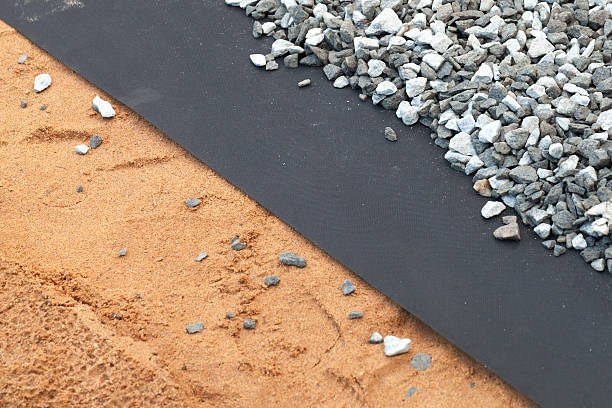
October 5, 2023
When it comes to construction and engineering projects, geotextiles are an essential component that often goes unnoticed but plays a crucial role in ensuring the stability and longevity of structures. In this article, we’ll address some common questions about the use of geotextiles, their functions, and how to choose the right one for your project.
1. What are the site conditions that can warrant the use of geotextiles?
Filtration: Geotextiles are frequently used in situations where soil drainage is necessary to reduce pore pressure that can challenge the stability of a structure. For example, French drains employ geotextiles in conjunction with stones and perforated pipes. These geotextiles prevent fine soil particles from entering the pipes, which could reduce flow or block them.
Selecting the right geotextile is crucial, and key factors include permeability coefficient, resistance to puncture, and tensile strength values. The higher the permeability coefficient, the better for quick pore pressure dissipation, especially in scenarios like soil retaining walls with high water tables, where geotextiles can reduce construction costs by influencing structural designs.
2. How can the comparative qualities of geotextiles be judged?
Comparing geotextiles involves evaluating their ability to resist puncture, tear, and their permeability. CBR (California Bearing Ratio), tensile strength, and permeability values are essential metrics. However, the quality of a geotextile should align with its intended function at the site. Using a cost-effective non-woven geotextile with adequate CBR and permeability may be more practical than an expensive woven geotextile for certain applications, like a French drain.
3. What is the recommended overlap of geotextile during construction?
The recommended overlap of geotextile during construction can vary depending on the specific design requirements and site conditions. However, a minimum overlap of 0.5 meters is a good starting point. Always consult with your engineer or project manager to determine the precise requirements for your project.
4. Where can high-quality geotextiles and geosynthetics be bought locally in Nigeria?
For those seeking high-quality geotextiles, gabion baskets, and other geosynthetics in Nigeria, Gabions Geomembrane and Geotextile Ltd is your trusted source. They import competitively priced, top-quality geosynthetics, including nonwoven and woven geotextiles, as well as erosion control construction materials such as gabions, reno-mattresses, geogrids, waterproofing geomembranes, geomats, geocells, geobags/tubes, and geo-drains.
Gabions Geomembrane and Geotextile Ltd takes pride in their prompt services, which have earned them a customer-return rate of about 95%. They also offer free technical advice to their customers. For all your geotextile and geosynthetic needs in Nigeria, contact Geomembrane Gabions & Geotextile Ltd in Kaduna, Nigeria, at +234 703 784 5174 (Phone & WhatsApp) or through email at [email protected] and [email protected]. You can also visit their website at www.gabiongeotextiles.com.
In conclusion, geotextiles are versatile materials with a wide range of applications in civil engineering and construction. Understanding their functions and selecting the right type for your project can lead to cost savings and improved structural performance. When in need of high-quality geotextiles and geosynthetics in Nigeria, trust Gabions Geomembrane and Geotextile Ltd to provide the solutions you require.
